
What is a park model home?
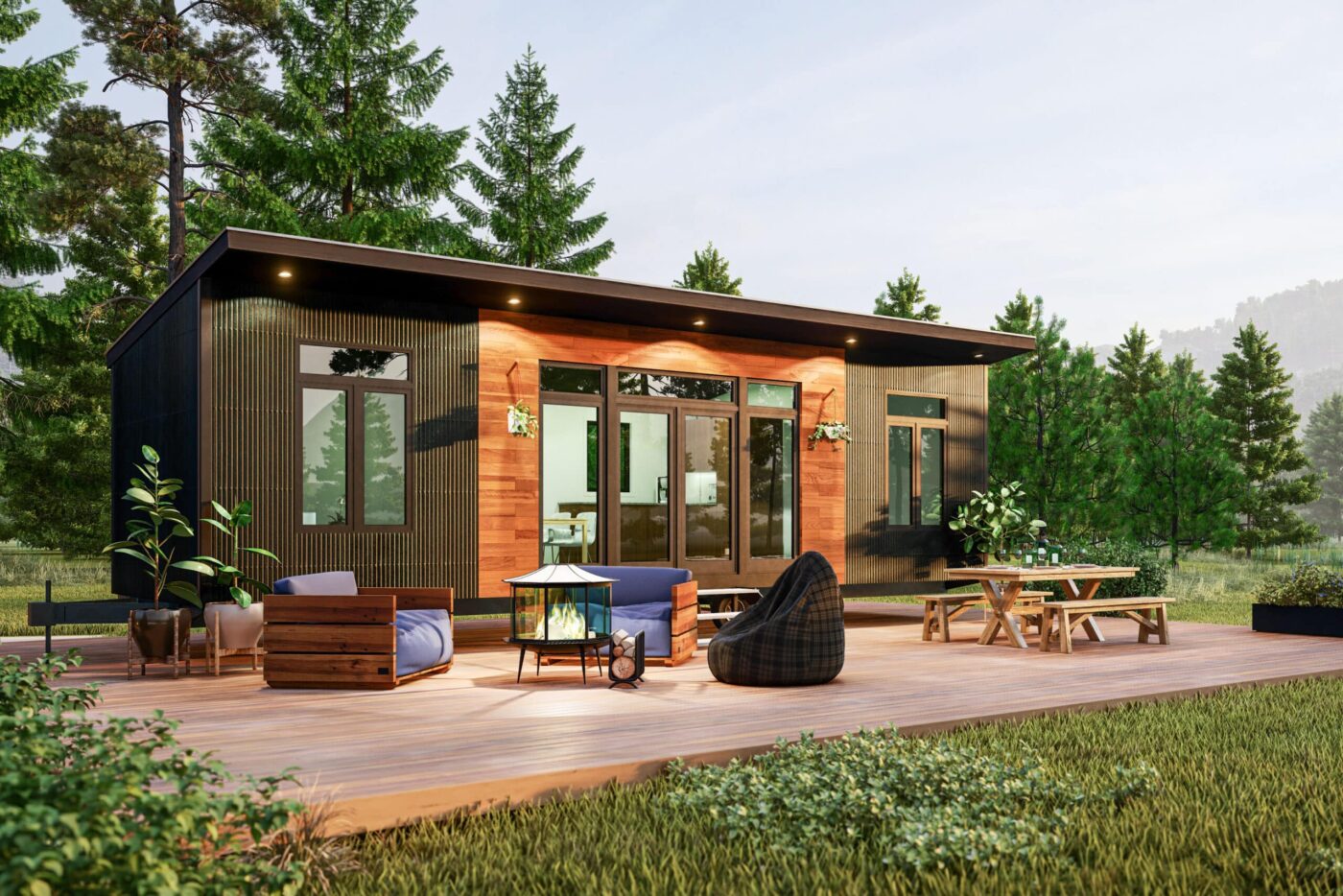
Most likely, you’ve come to this article because you have one or more of the following questions in mind: What is a park model home? What’s the great hype around it? According to the RV Industry Association (RVIA), a park model home is an “unique towable RV designed to provide temporary living quarters for recreational, seasonal, camping or travel use.”
The definition of a park model home is distinguished by a few distinct characteristics:
- Less than 400 square feet
- Built to code
- Registered as an RV
- Mounted on wheels
- A single trailer chassis is the foundation
- Receive a seal of inspection from the RVIA
While they are classified as recreational vehicles, park model homes are most commonly parked on a foundation at a campground, retreat center, or on private property. At these locations they are connected to common utilities like water and sewer.
Keep in mind that there are a few things a park model home is not:
- Park model homes are not meant to be a permanent housing situation for anyone.
- Park model homes are not created to be attached to private or public property.
- Park model homes are not included in the U.S. Department of Housing and Urban Development’s (HUD) criteria for a manufactured home.
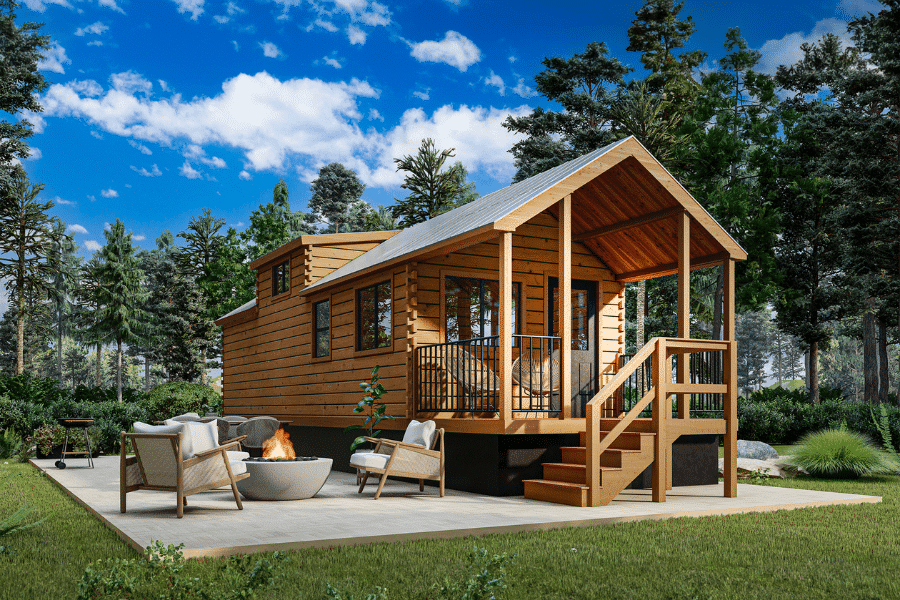
What is the difference between a park model home and a tiny house?
While both a park model home and a manufactured tiny home offer tiny living to folks, there are a few differences that can easily be overlooked. The main differences of a park model vs a tiny home include the following:
- Length of Occupancy
- Registration
- Building codes
- Size
Length of Occupancy
Park model homes are designed for seasonal occupancy such as a summer vacation on a campsite in Acadia National Park (getting the travel bug yet?). On the other hand, tiny homes are suitable for long-term occupancy since they are crafted and designed with material that can sustain long-term living.
Registration
Park model homes are registered and tagged just like another RV, enabling you to travel and park legally. However, tiny homes are not registered like an RV.
Building Codes
Park models are built according to the ANSI A119.5 code, while tiny homes “in the form of modular dwellings and site-built dwellings” must be built to the IRC Building Codes in order to be a legal living space. Always verify which building and zoning permits are required from your local government.
Size
Park models are generally around 300-400 square feet, while tiny homes can be much less than 400 square feet.
| Occupancy | Registration | Building Codes | Size | |
| Park Model | Seasonal | RV registration | Built to the ANSI A119.5 code; aren’t required to be compliant with building codes | About 300-400 sq ft |
| Manufactured Tiny Home | Permanent | No registration | Must be built to the IRC Building Codes | Less than 400 sq ft |
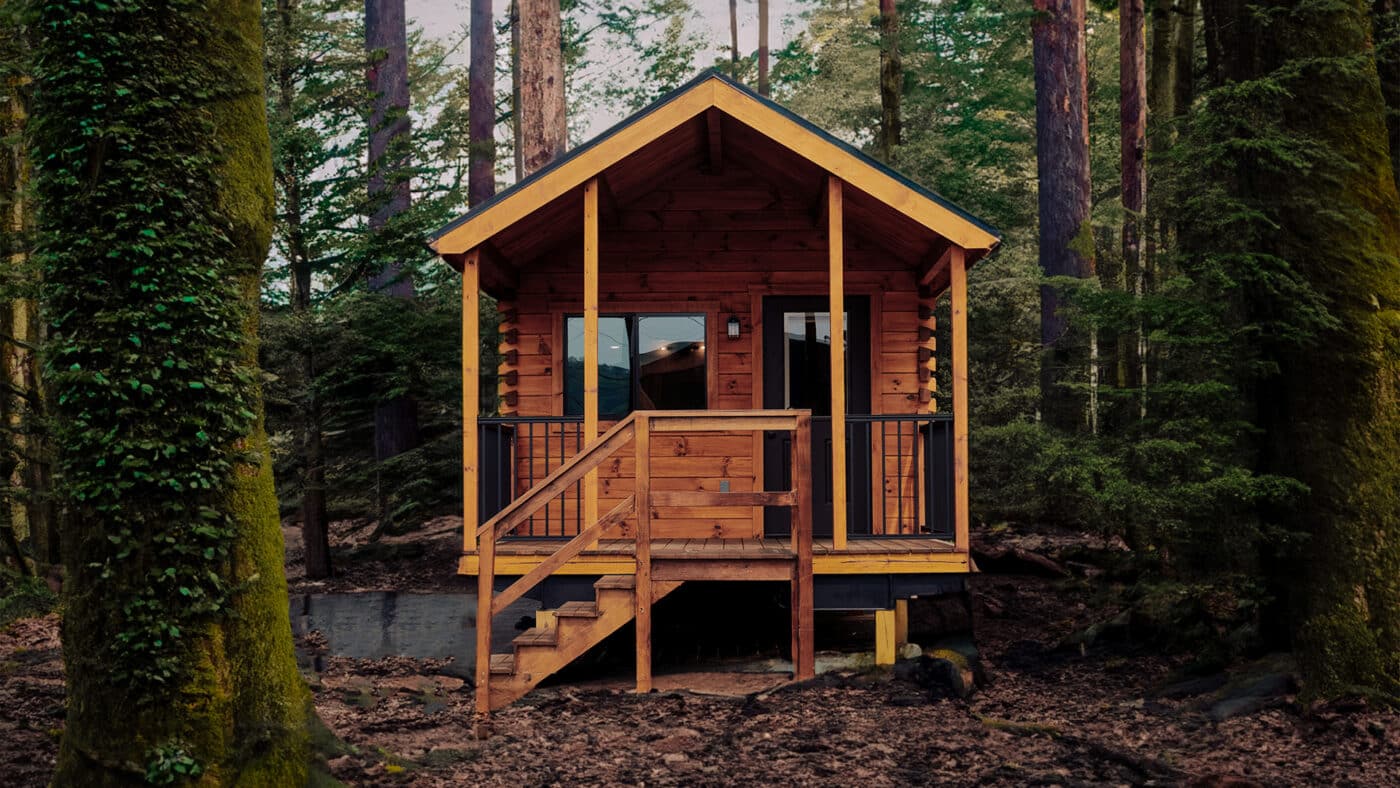
What is the difference between a park model home and an RV?
Both park model homes and RVs are built according to the ANSI A119.5 code and registered as RVs. However, park model homes are distinct because porches or decks can be built into the design plan. Additionally, park model homes often have a peaked roof and can be “up to 15 feet wide and 26 feet in length.”
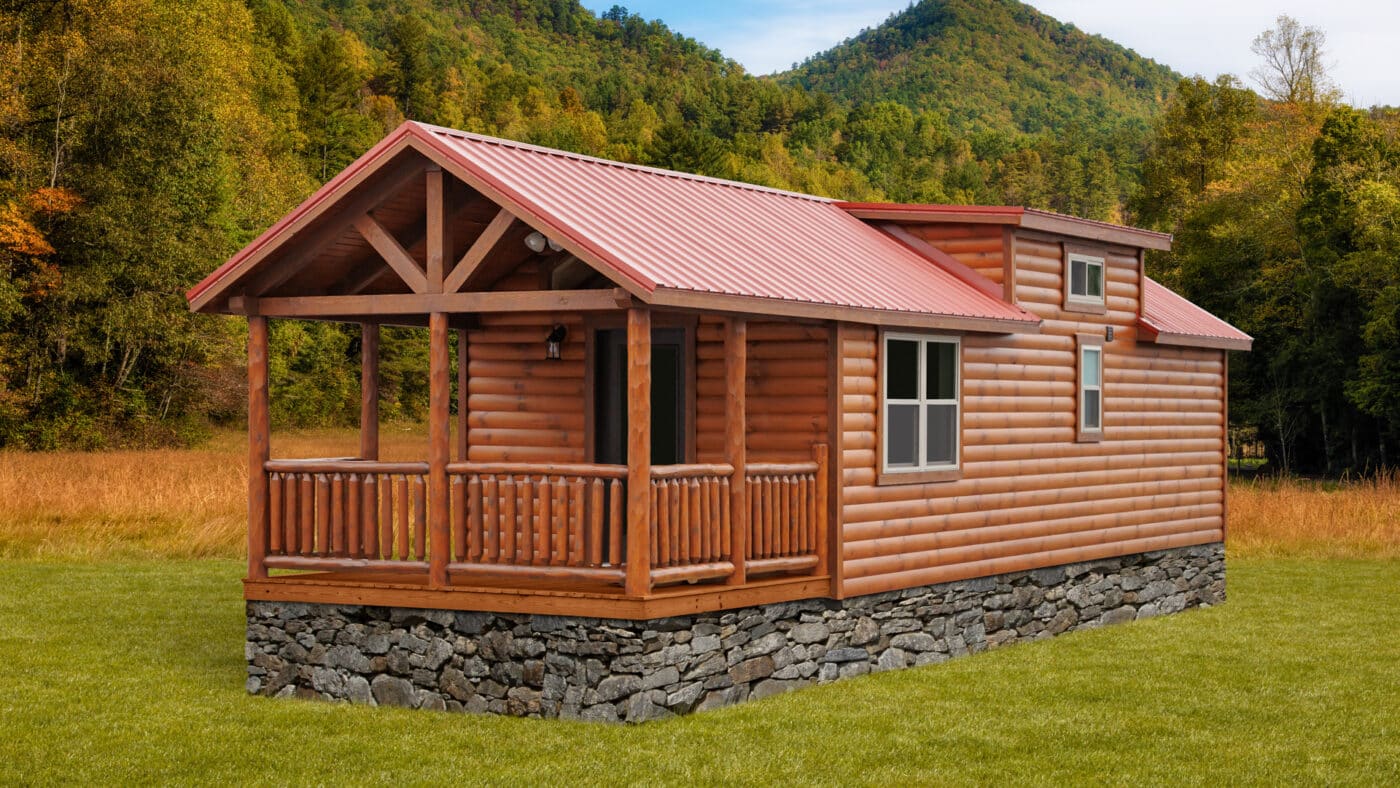
What is the difference between a mobile home and a park model home?
Take a look at our graph of the key differences between a mobile home and a park model home. For more information, you can read further in our article.
| Size | Occupancy | Building Codes | Location | |
| Park Model Homes | Less than 400 square feet | Mostly seasonal | Built according to the ANSI A119.5 codes | Usually on campsites; can be placed on private land if allowed in that county/city |
| Mobile Homes | 500-2,000 square feet | Full-time | Must be compliant with HUD codes | Places on private property, generally |
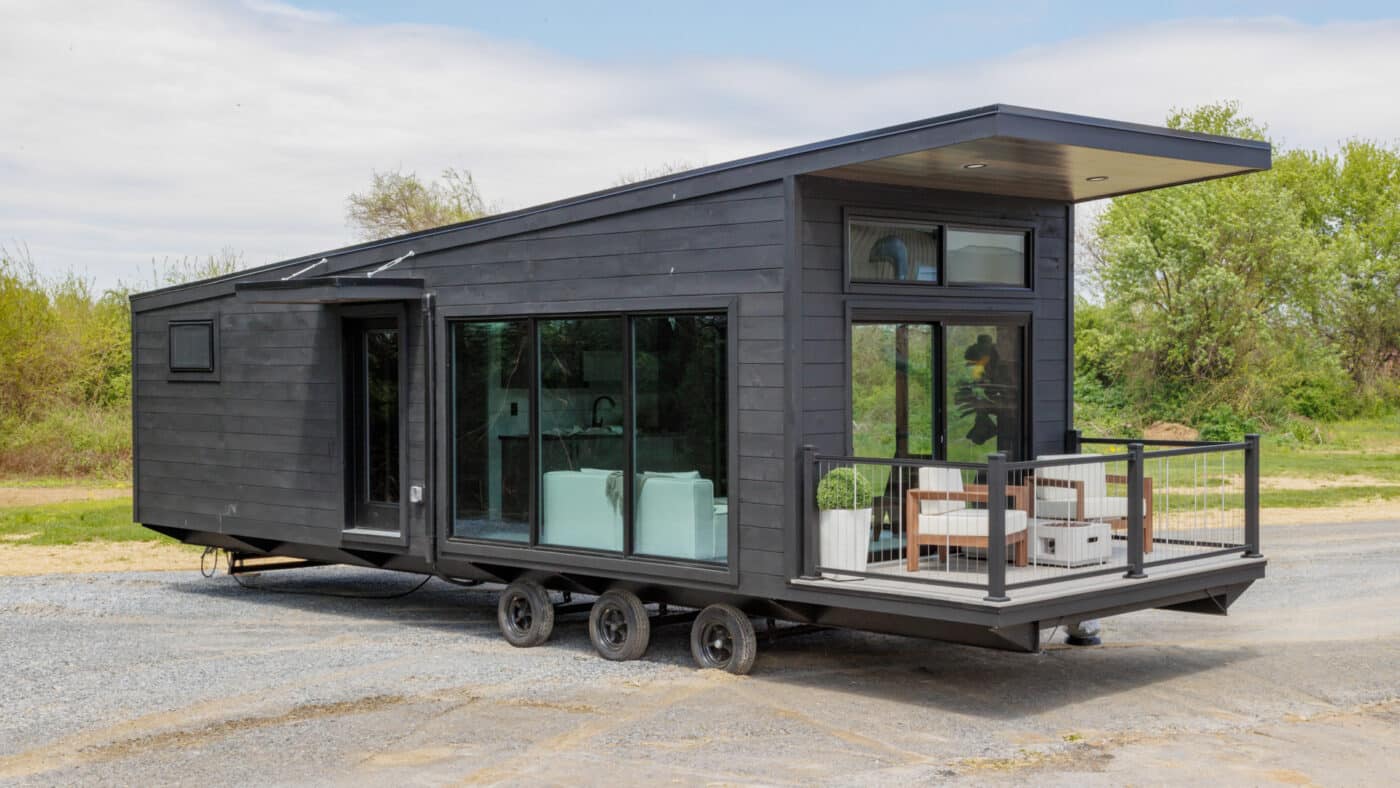
Why should I choose a park model home?
Overall, it depends on what you want in life or what you are looking to gain. But park models do offer many benefits to those who choose to invest in one. Park model homes boast flexibility, affordability, access to scenic locations, community living, possible rental income, and easy customizations.
Flexibility
If you work remotely and want to travel through the West (and really, anywhere in the US), you can! A park model is a wonderful option for people who are not tied down to a “brick and mortar” job and want to get out and explore the world for themselves.
Affordability
Generally, park models are much cheaper than traditional homes or vacation homes. With the extra change in your pocket, you’ll be able to have the resources to experience more of the world around you.
Scenic Locations
It’s easy to feel like you’re trapped in the same scenic area when you live in one specific location. And if you live in a house, the truth is you are confined to one area of the world. But with a park model, you have the opportunity and the freedom to take your home to different locations. Dreaming of a beach life or fantasizing about hiking the mountains every evening? These are two very different dreams, yes, but with a park model you can easily live in both sections of the world.

Community Living
Because park models can be set on campgrounds or in other community locations, there is a heightened sense of community. Residents of these communities can bond over shared experiences of tiny living and interact in other social activities.
Rental Income
When you’re not using a park model, these homes can be rented out as an Airbnb of sorts. This is a two-fold blessing: you won’t have a vacant building to worry about and you will receive some extra cash.
Customizations
Park model homes are easily customizable. While they are very small, it is simple to add a loft, kitchen, bathroom, and other amenities that may not be available in a simple RV.

Cons of Park Models:
While a park model home offers many benefits, there are a few disadvantages that must be considered when thinking about buying a park model home.
Seasonal:
In general, park models can not be used year-round since they are not ideally made to withstand cold weather. As a result, they are not in an ideal permanent housing situation.
Limited space
By law, park models are 400 square feet or less. So obviously, space is very limited. Now, if you are a single or a couple, a park model can be ideal for you and your belongings. But as soon as you add kids or guests, the park model may become rather cramped and overcrowded.
Permitting Challenges
Gaining the correct permits for a park model can pose a challenge depending where you live in the US. It’s important that you know before buying a park model if there are any legal aspects that would hinder you from obtaining a park model.
Mobility Challenges
Of course, park models can be transported across state or country borders, but a powerful vehicle such as a Ford F350 to tow your home.
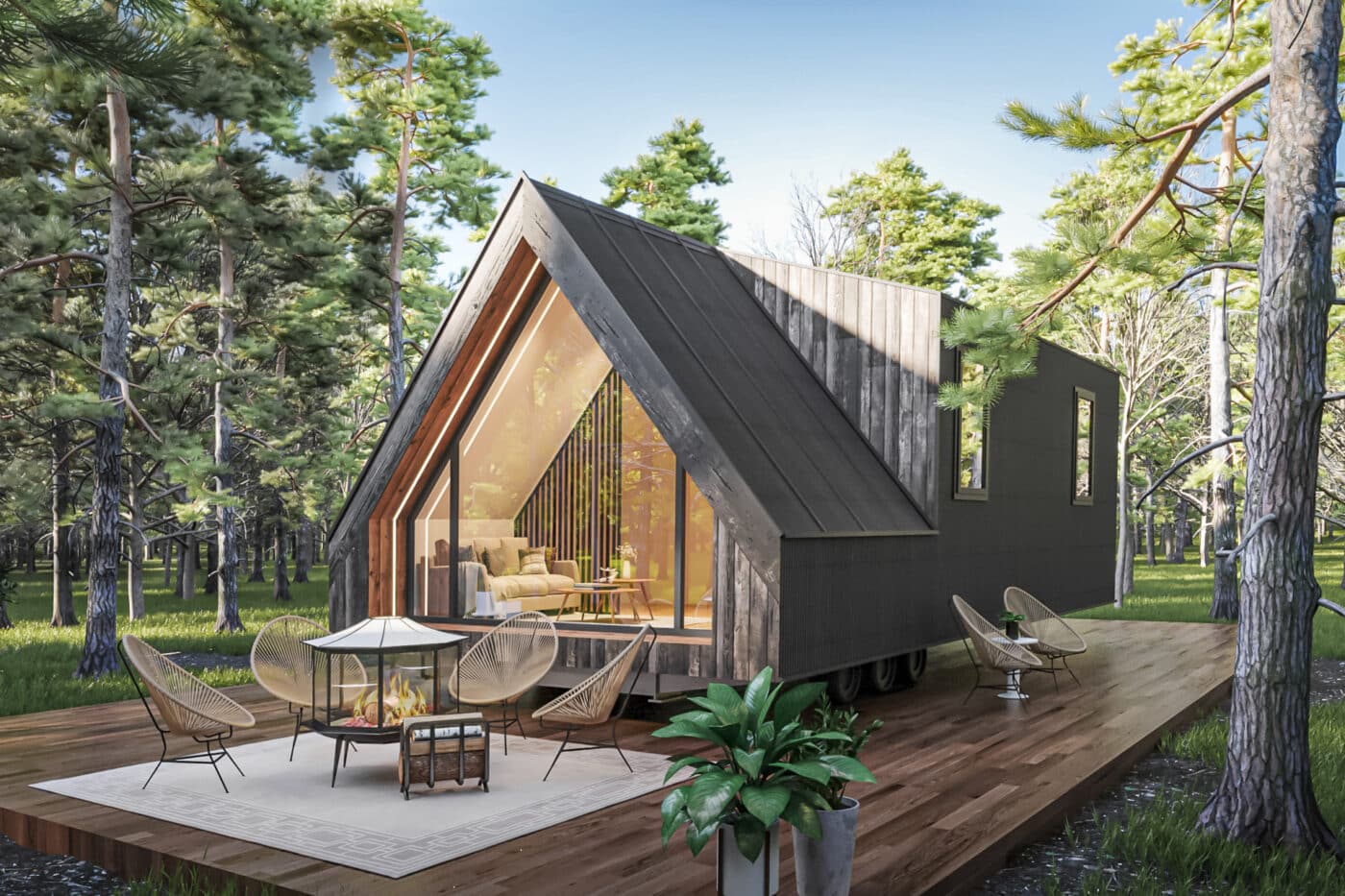
Common Uses of a Park Model Home
There are a variety of uses for a park model home especially given that park model homes are not ideal for long-term living. Check out these creative uses that just might make it worth buying a park model home.
Park Model Home As A Guest House
A park model home can make for a great guest house on your property. Having a park model home gives your guest not only the comfortable space of their own room, but their own house for an extended stay or just needed privacy. Whether you are hosting visiting in-laws or out-of-town friends this can be a great option for you. It can even be rented out as an Airbnb.
Park Model Home In A Retreat Center
It is not uncommon to find a park model home at a retreat center where they may offer 10-20 small cabins to rent for the weekend. These cabins are often park model homes that come with a floor plan of around 400 sq. ft. of living space. While that may sound on the small side, it still provides a place to relax, and step away from the rest of the group at the retreat center.
Park Model Home As A Vacation Home
Instead of traveling with a camper, you can place a park model home at your destination of choice and use it as a small vacation home. Whether for a couples getaway, family vacation, or just solitude retreat, park model homes can be a nice getaway spot without the headache of paying nightly fees for a hotel or even finding a hotel.
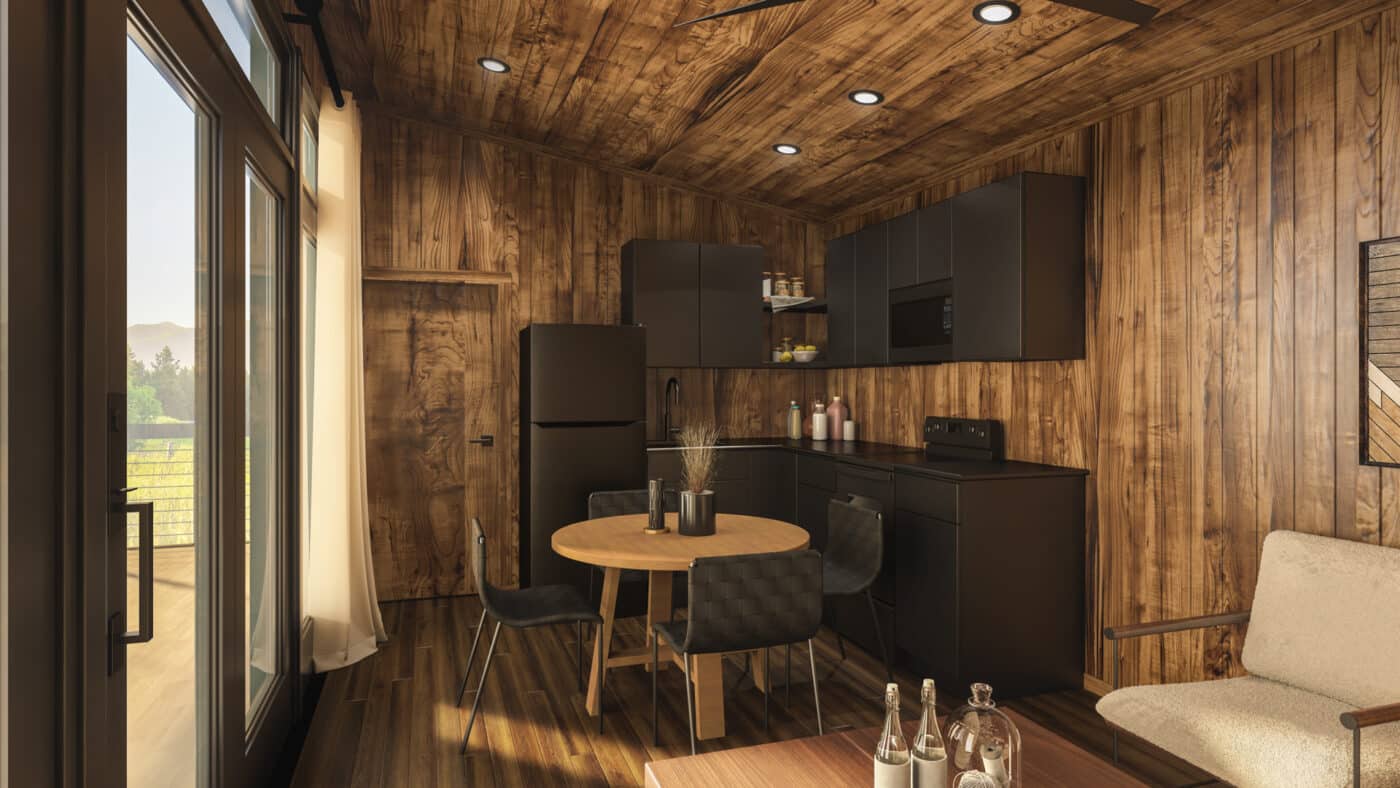
FAQs
Can I put a park model home on my property?
It depends. Because park model homes are not required to be built according to the HUD code, it’s important that you check with your county or city to see if it’s legal to store your park model home on your property.
Are park model homes insulated?
Yes, park model homes can be insulated. While your park model home may not come with all the insulation it needs to withstand the winter months, adding insulation is always a possibility. For more tips on winterizing a park model home, check out our article.
What is the life expectancy of a park model RV?
Of course, the life expectancy of a park model home can vary depending on the design, construction, and more. But overall, a park model home will last around 20-50 years long.
Summary
Now that we’ve reached the end of this article, we hope that you have a full understanding of what park model homes are and how they differ from other tiny home options. If you are interested in purchasing your own park model home, take a look inside and see what we have to offer. Or if you simply have questions about our pricing or more, feel free to contact us.
No Cabins To Display
The Pocono Park Model Home is the first Park Model that comes with LP smartside instead of the log siding. This siding gives it a clean modern look that makes for a great getaway cabin. Check out the Pocono today!

The Rockwood
The Rockwood Luxury Park Model Home is designed and built for modern luxury. The Rockwood comes standard with the can’t-miss sloped roof style and the beautiful black siding. Check out the Rockwood today!

The Sonoma
The Alpine Park Model is a beautiful, rustic cabin with a modern twist. The Alpine features a bedroom, full bath, and a kitchen/great room area. Check out the Alpine today!
